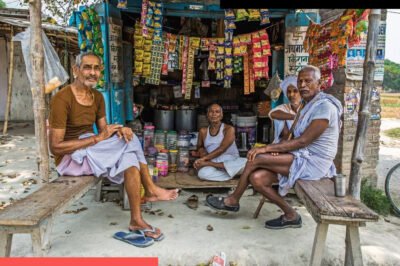The recently released Household Consumption Survey 2023-24 by the National Statistical Office (NSO) reveals notable differences in food spending patterns between rural and urban households in India. The data sheds light on evolving consumption trends and highlights the significant gap in expenditure between the two segments. While rural households spend a larger share of their income on food, urban households allocate more towards non-food essentials, reflecting the broader socio-economic divide in the country.
Key Findings from the Survey
The survey highlights stark disparities in how rural and urban households prioritize their spending.
- Share of Food in Spending:
Rural households allocate about 50% of their total spending to food items, compared to 38% among urban households. This suggests that food continues to dominate rural consumption patterns, influenced by lower incomes and fewer lifestyle expenses. - Average Monthly Expenditure:
The average monthly consumption expenditure per household stands significantly higher in urban areas than in rural regions. This disparity underscores the economic divide between the two segments.
The survey also highlights a shift in food preferences, with both rural and urban households showing increased spending on packaged and processed foods, reflecting the growing influence of modern retail and changing dietary habits.
Factors Contributing to the Spending Gap
Several factors drive the differences in spending patterns between rural and urban households.
- Income Disparities:
Urban households typically enjoy higher income levels, allowing them to allocate more towards non-food items such as education, healthcare, and recreation. Rural households, with lower incomes, prioritize food as a necessity. - Access to Resources:
Urban areas have better access to diverse food options, including packaged and ready-to-eat meals. In contrast, rural households rely heavily on locally produced or unprocessed foods, contributing to differences in spending habits. - Lifestyle and Aspirations:
Urban households often spend more on discretionary items, driven by lifestyle aspirations and exposure to modern retail. Rural households, meanwhile, remain focused on basic needs. - Inflation and Food Costs:
Rising food prices impact rural households more acutely, as food constitutes a larger portion of their budget. Urban households, with more diversified spending, are relatively less affected.
Changing Food Consumption Trends
Both rural and urban households are witnessing changes in food consumption patterns.
- Processed and Packaged Foods:
There has been a noticeable increase in the consumption of processed and packaged foods across both segments, driven by convenience and changing tastes. - Health and Nutrition:
Rising awareness about health and nutrition is influencing spending on healthier food options, including organic produce and fortified foods, particularly among urban consumers.
These trends indicate a gradual shift towards modern consumption habits, though rural households adopt these changes at a slower pace due to economic constraints.
Policy Implications
The findings of the survey carry significant implications for policymakers, businesses, and stakeholders in India’s food economy.
- Targeted Interventions:
Policies aimed at improving rural income levels and reducing food inflation could help bridge the spending gap. Initiatives such as public distribution systems and rural employment schemes can play a critical role. - Infrastructure Development:
Enhancing access to markets and modern retail in rural areas can offer greater food choices and improve affordability. - Nutritional Awareness:
Campaigns promoting healthy eating habits and nutritional education should be tailored to both rural and urban audiences, addressing their unique challenges and preferences.
Conclusion
The Household Consumption Survey 2023-24 provides valuable insights into India’s evolving spending patterns, highlighting the persistent gap between rural and urban households. While urban households continue to diversify their spending, rural households remain focused on food due to economic limitations. Bridging this divide will require targeted policy interventions and inclusive growth strategies to ensure equitable access to resources and opportunities.








Leave a Reply